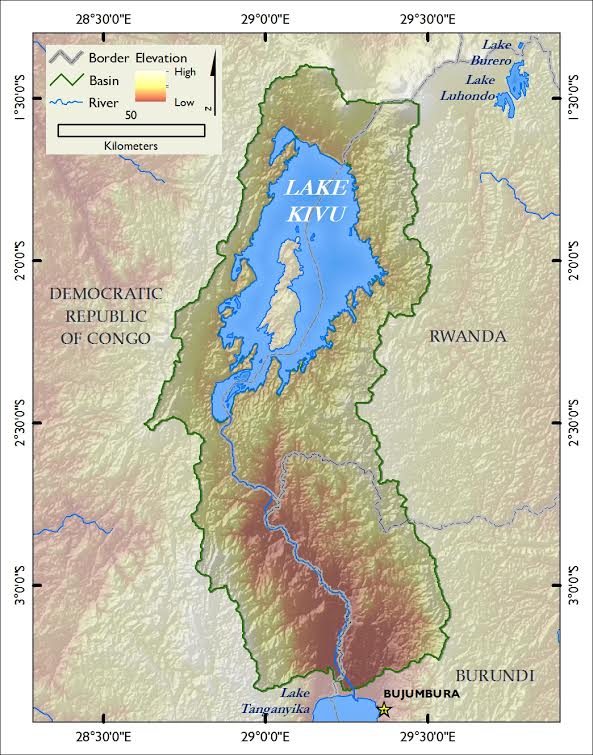
Bio-physical and demographic characteristics
-
Shared by Rwanda and Democratic Republic of Congo (DRC)
-
The only lake among the AGL with high amounts of methane and CO2
-
Surface area = 2,370 km², shoreline = 860 km
-
Basin has a population of ~2 million people
-
One of the highest population densities and growth rates in the AGL region
-
Majority of the population lacks clean water and has poor sanitation
Values and investment opportunities
-
~28 fish species, 50% of which are endemic cichlids with four introduced fish species
-
Biggest local source of fish in Rwanda and produces ~21,400 tons of fish per year with the introduced Lake Tanganyika sardine as the main fishery
-
Fishery supports ~500,000 people in Rwanda and the DRC
-
Extraction of large volumes of methane could generate substantial electric energy
-
High potential for tourism on islands and around the lake
Ecological and economic concerns
-
Lake shores and basin are densely populated with settlements
-
Localized eutrophication from land-use change along the lake shores
-
Sardine fishery is threatened by rapidly increasing fishing pressure
-
Deforestation, especially in Rwanda, is high due to the high population density
-
Reported conflicts among fishers from Rwanda and the DRC
Governance
-
Regional commission to coordinate policies and regulations for resource management
-
National policies and regulations to guide development and conservation of natural resources are in place
-
Some short-term regional projects have been implemented by international organizations
-
Limited funding from national governments and international groups
Potential sustainable development interventions
-
Improve the coordination of national management and promote community groups for development and conservation of natural resources
-
Establish sustainable funding mechanisms for development and conservation of natural resources
-
Enforce measures to ensure methane extraction is done sustainably and does not harm people and the environment
-
Determine levels for sustainable exploitation of the sardine fishery


